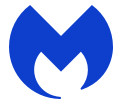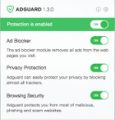What is ProfessionalHelper
ProfessionalHelper is an adware application that targets Mac computers. Adware is not as dangerous as such as a Trojan horse or Ransomware, but its presence can bring constant pop up windows and/or annoying ads. Actually authors of adware is associated with some third-party ad networks and by displaying advertisements to users they make profit for yourself. These adverts not only bother your browsing experience but also redirect your browser to malicious and scam websites.
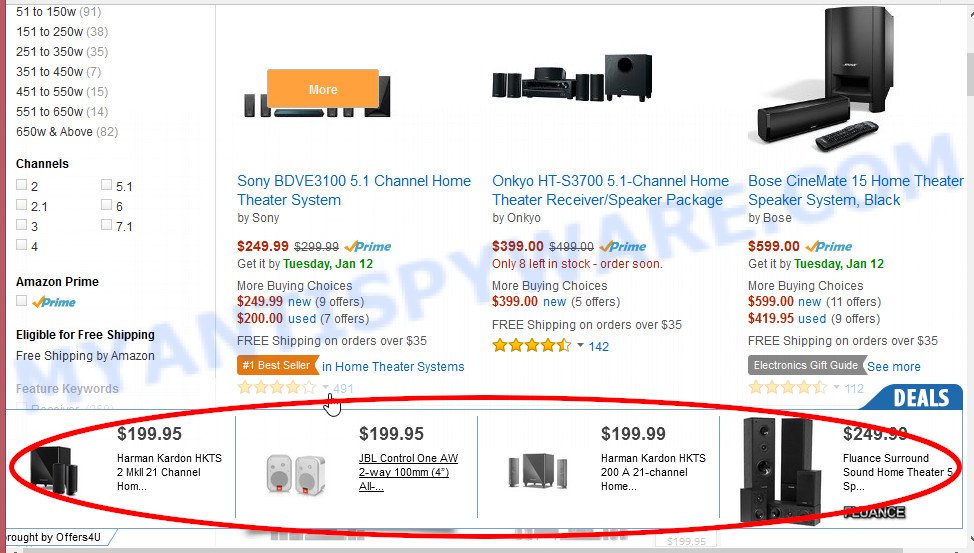
Unwanted ads
Another reason why you need to get rid of adware is its online data-tracking activity. ProfessionalHelper can analyze the location and which Web web-pages you visit, and then display advertisements to the types of content, goods or services featured there. Adware makers can collect and sell your browsing information and behavior to third parties.
If you are unfortunate have adware or malware running on your MAC, then you can follow the suggestions here to delete ProfessionalHelper from your MAC and web browser.
How does ProfessionalHelper get on your MAC
Usually, adware gets into Mac computers as part of a bundle with free software, sharing files and other unsafe software that users downloaded from the Internet. The creators of adware software pays software makers for distributing adware software within their software. So, optional software is often included as part of the installer. In order to avoid the installation of any adware: choose only Manual, Custom or Advanced setup type and reject all bundled programs in which you are unsure.
Threat Summary
| Name | ProfessionalHelper |
| Type | adware software, PUP (potentially unwanted program), Mac malware, Mac virus |
| Detection Names | Program:MacOS/Vigram.A, OSX.Trojan.Gen, Adware.MAC.Generic, Adware/Adload!OSX, Osx.Adware.Cimpli, MacOS.Agent-MT, Trojan-Downloader.OSX.Adload and ApplicUnwnt |
| Distribution | Free software installers, shady pop-up ads, fake update tools and torrent downloads |
| Symptoms | The web site links redirect to a web-pages different from what you expected, you experience a huge count of of unexpected ads, your computer starts automatically installing unwanted programs, an unexpected toolbar appears in your web-browser, your web browser start page has changed without your permission, your internet browser slows to a crawl. |
| Removal | ProfessionalHelper removal guide |
How to Remove ProfessionalHelper (removal tutorial)
We can assist you get rid of ProfessionalHelper from your web browsers, without the need to take your MAC to a professional. Simply follow the removal guidance below if you currently have the adware on your Apple computer and want to remove it. If you have any difficulty while trying to remove the ProfessionalHelper adware, feel free to ask for our assist in the comment section below. Certain of the steps below will require you to exit this webpage. So, please read the steps carefully, after that bookmark it or open it on your smartphone for later reference.
To remove ProfessionalHelper, perform the steps below:
- Remove unwanted profiles on Mac device
- Delete ProfessionalHelper related applications through the Finder
- Remove ProfessionalHelper related files and folders
- Scan your Mac with MalwareBytes
- Remove ProfessionalHelper from Safari, Chrome, Firefox
- How to stay safe online
Remove unwanted profiles on Mac device
ProfessionalHelper can install a configuration profile on the Mac system to block changes made to the browser settings. Therefore, you need to open system preferences, find and delete the profile installed by the adware software.
Click the System Preferences icon ( ![]() ) in the Dock, or choose Apple menu (
) in the Dock, or choose Apple menu ( ![]() ) > System Preferences.
) > System Preferences.
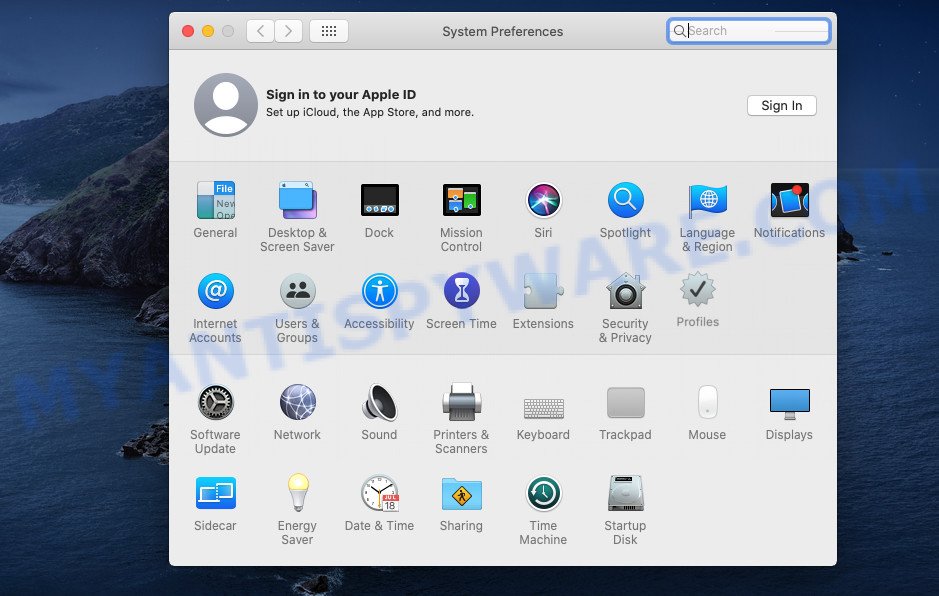
In System Preferences, click Profiles, then select a profile related to ProfessionalHelper.
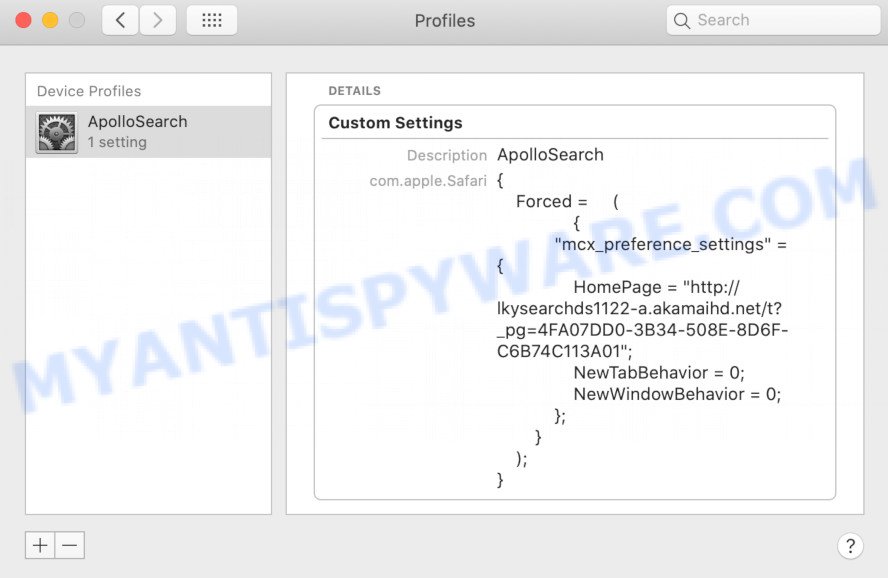
Click the minus button ( – ) located at the bottom-left of the Profiles screen to remove the profile.
Note: if you do not see Profiles in the System Preferences, that means there are no profiles installed on your Apple computer, which is normal.
Delete ProfessionalHelper related applications through the Finder
It’s of primary importance to identify and remove adware, PUPs and browser hijackers through ‘Applications’ section of your Finder.
Open Finder and click “Applications”.
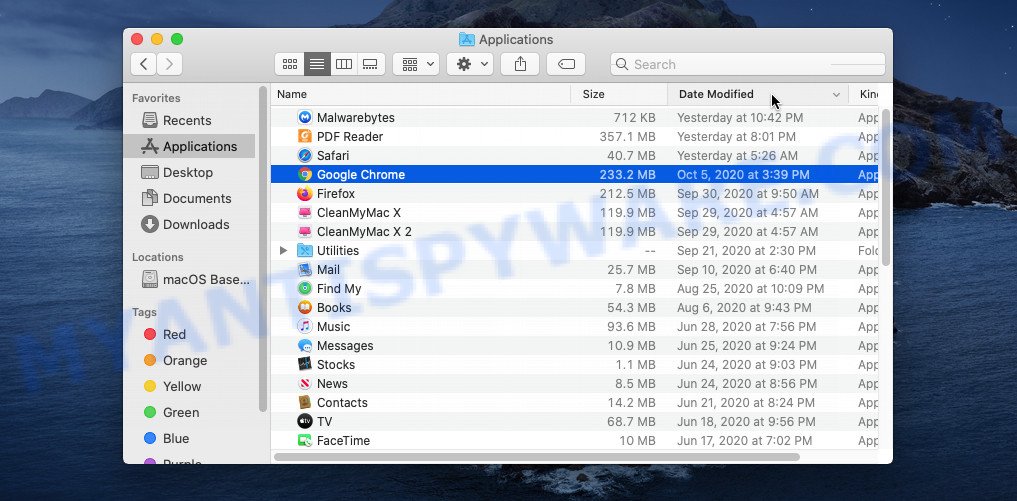
Very carefully look around the entire list of applications installed on your machine. Most likely, one of them is the ProfessionalHelper . Once you’ve found a questionable, unwanted or unused program, right click to it and choose “Move to Trash”. Another method is drag the program from the Applications folder to the Trash.
Don’t forget, choose Finder -> “Empty Trash”.
Remove ProfessionalHelper related files and folders
Now you need to try to find ProfessionalHelper related files and folders, and then delete them manually. You need to look for these files in certain directories. To quickly open them, we recommend using the “Go to Folder…” command.
ProfessionalHelper creates several files, these files must be found and removed. Below is a list of files associated with this unwanted program.
- /Library/LaunchDaemons/com.ProfessionalHelper.system.plist
- ~/Library/LaunchAgents/com.ProfessionalHelper.service.plist
- /Library/Application Support/.(RANDOM)/System/com.ProfessionalHelper.system
- ~/Library/Application Support/.(RANDOM)/Services/com.ProfessionalHelper.service.app
Some files created by ProfessionalHelper are hidden from the user. To find and delete them, you need to enable “show hidden files”. To do this, use the shortcut CMD + SHIFT + . Press once to show hidden files and again to hide them. There is another way. Click Finder -> Applications -> Utilities -> Terminal. In Terminal, paste the following text: defaults write com.apple.finder AppleShowAllFiles YES

Press Enter. Hold the ‘Option/alt’ key, then right click on the Finder icon in the dock and click Relaunch.
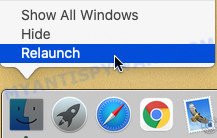
Click on the Finder icon. From the menu bar, select Go and click “Go to Folder…”. As a result, a small window opens that allows you to quickly open a specific directory.

Check for ProfessionalHelper generated files in the /Library/LaunchAgents folder

In the “Go to Folder…” window, type the following text and press Go:
/Library/LaunchAgents
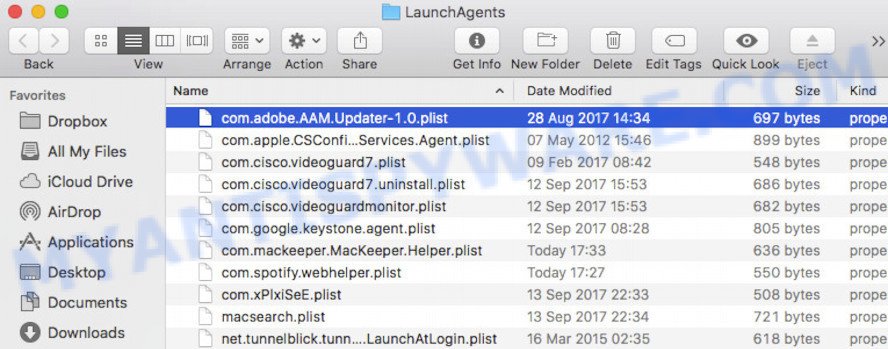
This will open the contents of the “/Library/LaunchAgents” folder. Look carefully at it and pay special attention to recently created files, as well as files that have a suspicious name. Move all suspicious files to the Trash. A few examples of files: com.net-preferences.plist, com.machelper.plist, macsearch.plist, installapp.plist, com.ProfessionalHelper.service.plist, search.plist and com.google.defaultsearch.plist, . Most often, browser hijackers, adware and PUPs create several files with similar names.
Check for ProfessionalHelper generated files in the /Library/Application Support folder

In the “Go to Folder…” window, type the following text and press Go:
/Library/Application Support
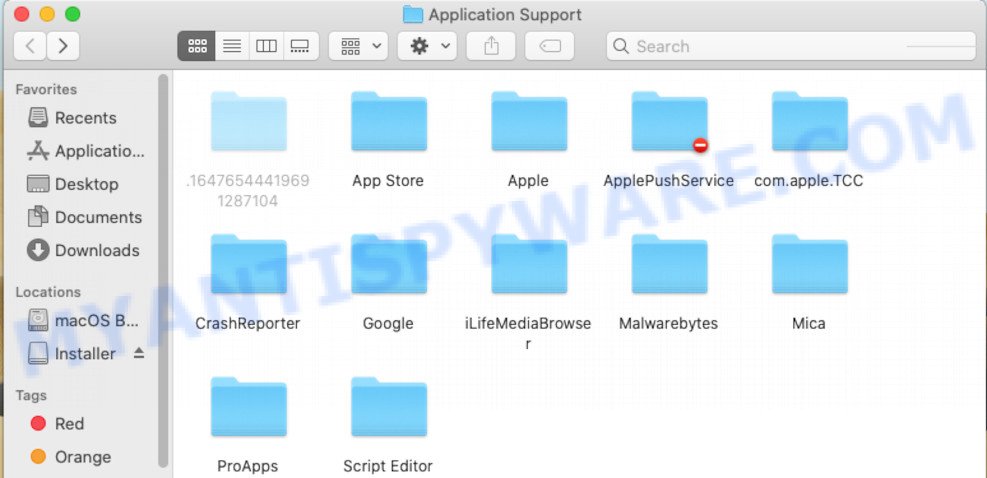
This will open the contents of the “Application Support” folder. Look carefully at its contents, pay special attention to recently added/changed folders and files. Check the contents of suspicious folders, if there is a file with a name similar to com.ProfessionalHelper.system, then this folder must be deleted. Move all suspicious folders and files to the Trash.
Check for ProfessionalHelper generated files in the “~/Library/LaunchAgents” folder

In the “Go to Folder…” window, type the following text and press Go:
~/Library/LaunchAgents

Proceed in the same way as with the “/Library/LaunchAgents” and “/Library/Application Support” folders. Look for suspicious and recently added files. Move all suspicious files to the Trash.
Check for ProfessionalHelper generated files in the /Library/LaunchDaemons folder
In the “Go to Folder…” window, type the following text and press Go:
/Library/LaunchDaemons

Carefully browse the entire list of files and pay special attention to recently created files, as well as files that have a suspicious name. Move all suspicious files to the Trash. A few examples of files to be deleted: com.macsearch.system.plist, com.machelper.system.plist, com.search.system.plist, com.installapp.system.plist and com.ProfessionalHelper.system.plist. In most cases, adware, browser hijackers and potentially unwanted programs create several files with similar names.
Scan your Mac with MalwareBytes
If you’re still having problems with the ProfessionalHelper removal or just wish to scan your Apple computer occasionally for adware and other malicious software, then download MalwareBytes AntiMalware. It is free for home use, and searches for and removes various unwanted programs that attacks your machine or degrades machine performance. MalwareBytes AntiMalware can remove PUPs, browser hijackers, toolbars and adware software as well as malware, including ransomware and trojans.
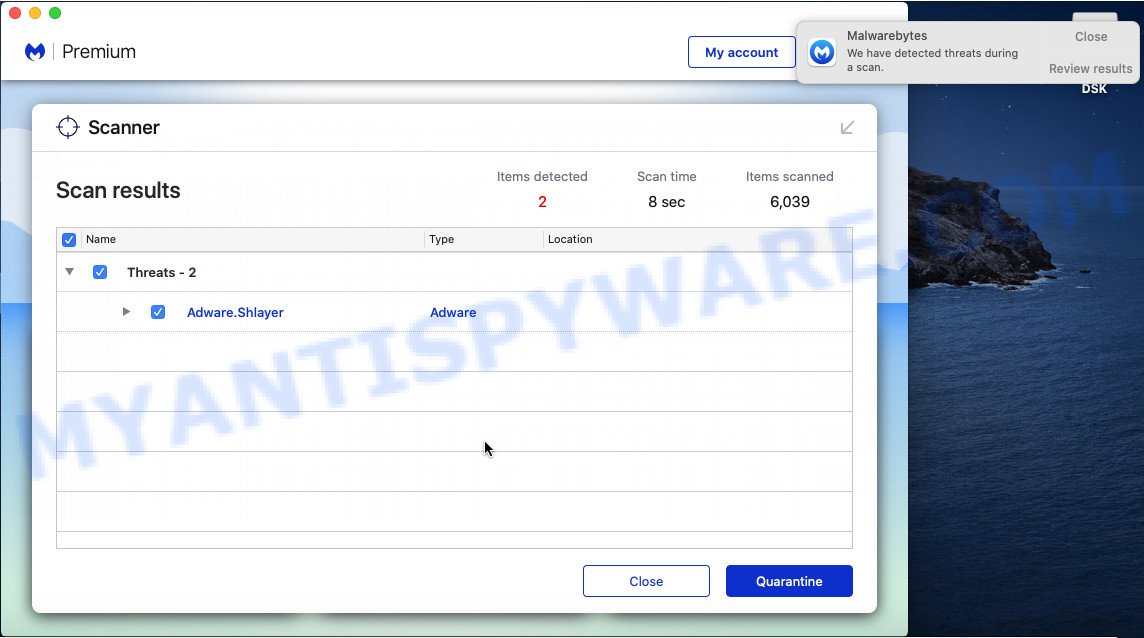
MalwareBytes AntiMalware can be downloaded from the following link.
21024 downloads
Author: Malwarebytes
Category: Security tools
Update: September 10, 2020
Once the download is done, run it and follow the prompts. Click the “Scan” button to perform a system scan for the ProfessionalHelper adware. While the MalwareBytes AntiMalware program is checking, you can see count of objects it has identified as threat. When you are ready, click the “Quarantine” button.
The MalwareBytes AntiMalware is a free program that you can use to delete all detected folders, files, malicious services and so on.
Remove ProfessionalHelper from Safari, Chrome, Firefox
Remove unwanted extensions is a easy way to get rid of ProfessionalHelper adware and revert back web browser’s settings which have been replaced by adware.
You can also try to remove ProfessionalHelper by reset Chrome settings. |
If you are still experiencing problems with ProfessionalHelper removal, you need to reset Mozilla Firefox browser. |
|
How to stay safe online
One of the worst things is the fact that you cannot block all malicious webpages using only built-in Microsoft Windows capabilities. However, there is a program out that you can use to block annoying browser redirects, ads and pop-ups in any modern web browsers including Google Chrome, Safari and Mozilla Firefox. It’s called Adguard and it works very well.
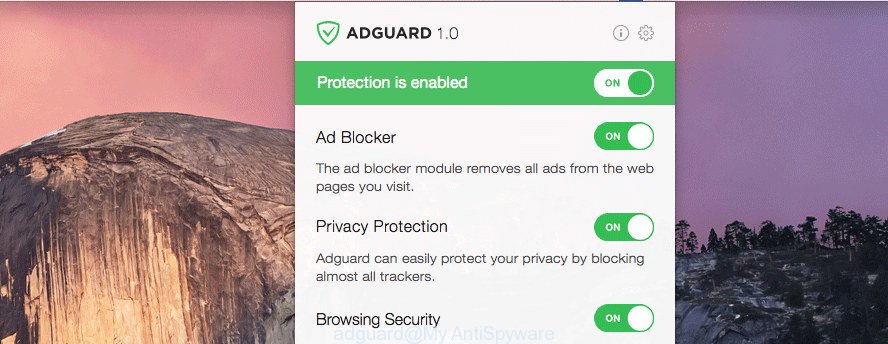
- Download AdGuard by clicking on the link below.
AdGuard for Mac download
3782 downloads
Author: © Adguard
Category: Security tools
Update: January 17, 2018
- Once the downloading process is complete, start the downloaded file. You will see the “Setup Wizard” program window. Follow the prompts.
- When the installation is complete, click “Skip” to close the installation program and use the default settings, or press “Get Started” to see an quick tutorial that will allow you get to know AdGuard better.
- In most cases, the default settings are enough and you don’t need to change anything. Each time, when you start your machine, AdGuard will start automatically and stop intrusive ads, block malicious and misleading web pages.
Finish words
Once you have removed the ProfessionalHelper adware using the steps, Mozilla Firefox, Google Chrome and Safari will no longer display any intrusive advertisements when you surf the Internet. Unfortunately, if the steps does not help you, then you have caught a new adware software, and then the best way – ask for help.
Please create a new question by using the “Ask Question” button in the Questions and Answers. Try to give us some details about your problems, so we can try to help you more accurately. Wait for one of our trained “Security Team” or Site Administrator to provide you with knowledgeable assistance tailored to your problem with the ProfessionalHelper .
